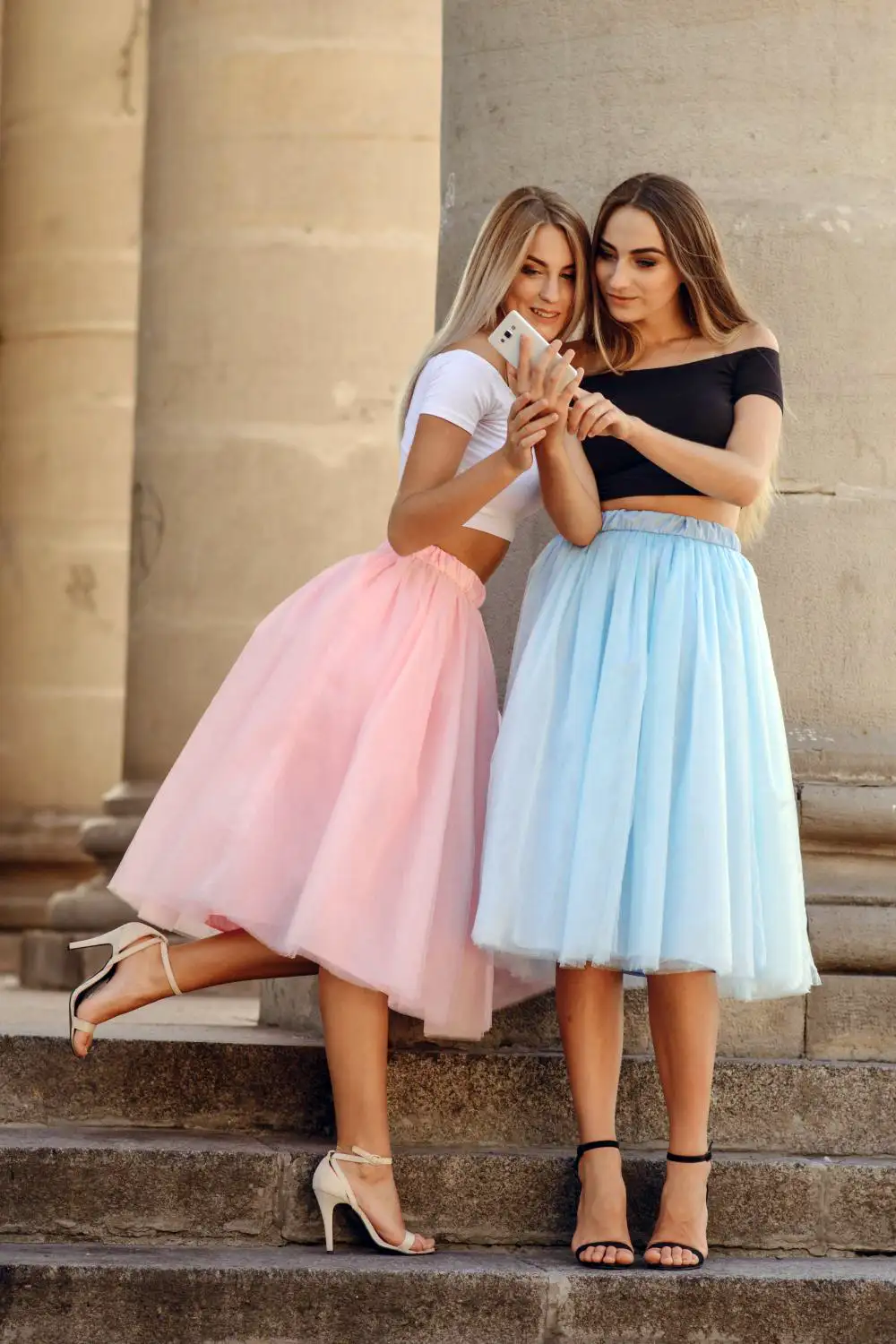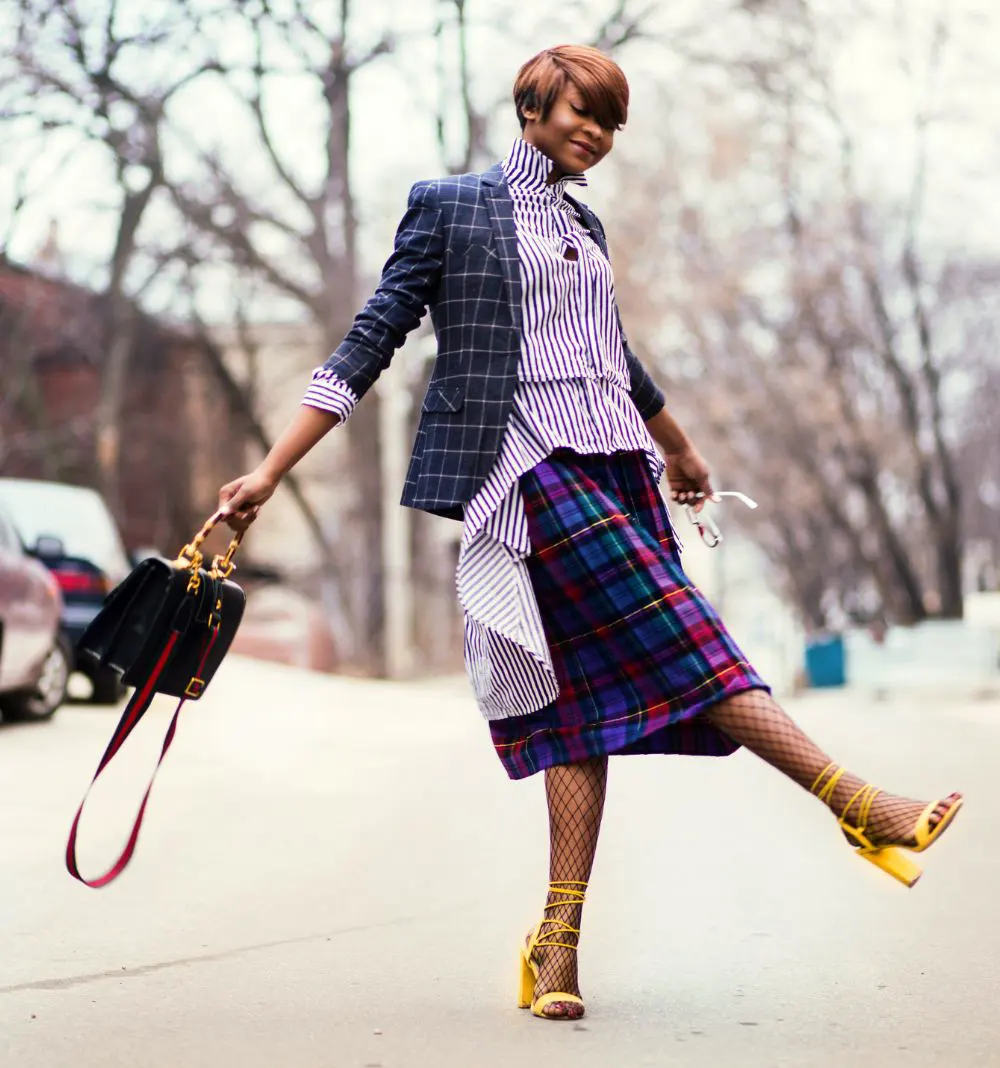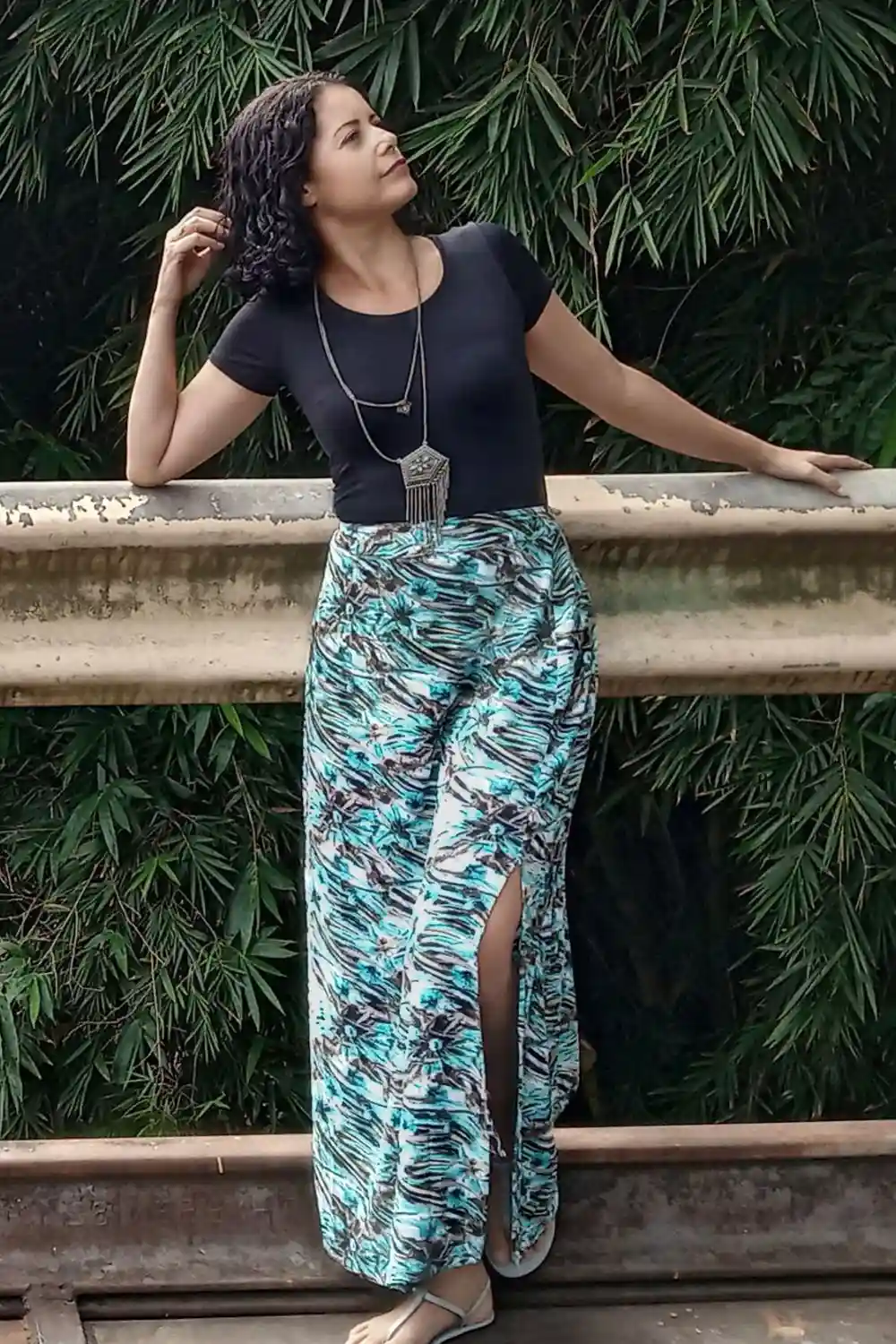In the fashion world, women have various choices, but one garment has stood the test of time, enchanting hearts and gracing runways for generations – skirts. Beyond just a piece of clothing, skirts symbolize femininity, modesty, and timeless elegance.
Join me on a journey to explore the captivating reasons why women around the globe are choosing skirts over pants. From the graceful fabric sway to the freedom they offer, skirts have an undeniable charm that sets them apart from practical pants.
Step into the world of skirts, where femininity reigns supreme and self-expression finds its canvas. We’ll delve into skirts’ cultural and religious significance, exploring how they embody modesty and the divine feminine.
But it’s not all about tradition – skirts offer comfort and convenience. Imagine breezy days and carefree movement, all while staying stylish and sophisticated. Whether it’s a casual outing or a formal affair, skirts effortlessly complement every shape and size, bringing out the innate elegance in each woman.
Why should females wear skirts instead of pants?
Skirts offer more modesty than pants
Some believe skirts offer females more modesty than pants due to completely covering the legs. Though modern skirts and pants vary in style and length, the traditional view considers skirts inherently more modest for concealing the shape of the lower body.
Comparing a long maxi skirt to tailored dress pants, the skirt offers full leg coverage from ankle to waist while pants reveal leg contours and shape. Skirts are seen as a traditional feminine garment that has been considered suitable attire for women for centuries.
Although pants have become widely accepted for women in recent decades, some continue to see skirts as more proper feminine attire, reflecting beliefs about what clothing is socially appropriate for women.
While pants can certainly be modest when stylish and fitted loosely, many argue long skirts provide the ultimate level of leg concealment due to completely covering the legs from hip to ankle in a single piece of fabric without gaps.
Therefore, full coverage of legs remains a primary reason some argue skirts provide superior modesty over even conservative pant styles.

Tradition and beliefs prefer skirts
In numerous cultures and faiths, skirts constitute preferred female attire representing traditional values pertaining to modesty adherence.
Various Islamic nations expect women cloaking legs/arms through skirts/ dresses, exhibiting modesty regarded as vital.
Amish women don large skirts demonstrating humility within austere communities. Mormon women cover their knees with skirts exemplifying church-endorsed decorum.
Throughout Hinduism, females traditionally wear skirts/ dresses, presenting propriety though modern options exist. Skirts signify conformity with cultural rituals/beliefs, whether through length, fabric, or style though individuality remains.
Skirt hemlines rising/falling across time within given societies indicate continuity of fundamental principles yet fluidity permitting minor changes.
Ultimately, skirts symbolize revered values transmitted across generations via female forms draped in culturally endorsed cloth circles.
While personal expression evolves, the basic function of skirts expressing modest, feminine virtue according to traditional beliefs within particular communities persists. This requires no elaborate justification beyond representing esteem for established norms privileging decorum and prioritizing community benefit over individual comfort.
Personal for skirts
Many women prefer skirts to pants because they are more comfortable, stylish, and aesthetically pleasing. Skirts offer benefits that make them the preferred choice for some based solely on individual tastes.
Skirts potentially possess higher levels of comfort due to allowing better ventilation and less restraint of the legs compared to pants. Skirts present wider opportunities for wide-ranging styles from casual to formal due to coming in an almost endless variety of designs, fabrics, lengths, and details.
Many women see skirts as inherently more elegant and feminine than pants, perceiving them as projecting an aesthetically charming appearance.
Skirts enable an increased range of movement for tasks like dancing or yoga since they provide fuller leg freedom compared to pants.
Certain professions where one stands for long periods, like servers or retail, demand greater comfort, making skirts the logical choice for those hoping to minimize workplace discomfort.
Ultimately, personal inclinations toward enjoying the style, feel, and visual effects of skirts convince many women to wear them rather than pants simply due to personal taste.
Job roles require skirts
Certain jobs historically expected women employees to wear skirts or dresses as part of formal company attire designed to maintain professional appearance and standards.
Many occupations that involve customer interaction traditionally required female staff to wear skirts, considering them smarter and more suitable for roles like customer service representatives, flight attendants, office assistants, and waitresses.
Skirts signal traditional femininity and elegance that customers and clients often consider appropriate for these kinds of jobs interacting regularly with the public.
Company uniform policies frequently mandated women wear skirts year-round, disregarding seasonal changes and personal comfort, focused mainly on visual presentation, and prioritizing perceived professionalism.
Although attitudes towards women in the workplace progressed over time, with pants gaining acceptance for female employees in most scenarios, some employers continued requiring skirts, particularly for public-facing positions. They deemed skirts necessary for jobs emphasizing customer service, entertainment, and hospitality.
While companies develop more inclusive uniform policies today, allowing women employees more choices regarding attire at work, many jobs involving frequent client and customer interaction still expect female staff to comply with traditional dress codes mandating skirts. These positions view skirts as optimal business apparel to please clients and customers.
Skirts emphasize femininity and elegance
Many women wear skirts because they traditionally enhance femininity by drawing attention to feminine curves and legs.
Culturally, skirts symbolize femaleness through centuries of women wearing them. Skirts highlight feminine features like curvy hips, slender waists, and shapely legs that straight-cut pants generally conceal.
Skirts swish around feminine legs while accentuating their shape and length and any dangling accessories that further emphasize femininity. Most skirts grow upward from the waist exposing the largest portion of the body that visually distinguishes femaleness.
Though not all women feel comfortable emphasizing their femininity, many women enjoy wearing skirts precisely for their ability to bring focus upon characteristically feminine physical traits.
Additionally, skirts often qualify as elegant and sophisticated clothing traditionally considered more feminine than pants, perceived as comparatively masculine.
Therefore, skirts worn by females generally augment the perception of femininity through visually accentuating curves and the stylistic differences between what traditionally defines feminine versus masculine garments.
Skirts are breezy and comfortable
Many women wear skirts because they provide more comfort, especially on hot days. Skirts allow for greater airflow and a breezier feel than pants, making women feel hot and constricted.
Skirts permit the free flow of air around women’s legs which helps keep them feeling cooler in warm weather due to fully exposing leg sections from hip to ankle.
On the other hand, pants cover the entire leg, restricting air movement and resulting in trapped heat, making the legs feel warm and sweaty.
Skirts also impose less restraint on the movement of the legs as they typically consist of one piece of looser fabric, contrasting with pants created from multiple panels of tighter fabric.
Because of qualities like full-leg exposure, one-piece loose construction, and excess fabric, skirts generate greater freedom of movement than pants. This enhancement of movement fosters feelings of relaxation and ease.
Outer garments providing temperature regulation, free movement, and looseness often correlate with higher perceived comfort levels, leading many women to choose skirts over pants. This preference is particularly evident when wearing on hot days, as skirts offer a way to maximize physical comfort.
Skirts complement all shapes elegantly
Skirts complement virtually all shapes by adding graceful beauty due to certain properties, making them inherently elegant clothing.
Longer skirts made from fine fabrics often epitomize elegance by visually enhancing a woman’s natural figure while concealing undesirable areas.
Full-length skirts create an illusion of perpetual movement that captivates the eye exuding a sense of grace arising from the ever-changing arrangement of surplus fabric as the wearer walks.
Classic skirt styles like sheath, A-line, and pencil accentuate a woman’s form in a sophisticated, refined manner compared to pants exposing less flesh yet constantly hinting at the shape of the legs underneath.
Simple details giving skirt hems asymmetry or texture contribute visual interest while retaining an understated elegance. Proper accompaniment by equally refined blouses and shoes, along with minimal simple jewelry, elevates the graceful demeanour established by an elegant skirt.
Ultimately properties inherent to skirts, like length, fabric, subtle styling, and complementary pairing with other items of clothing, conspire to generate a graceful aesthetic quality of refinement and elegance with the power to transform the appearance of the woman wearing the skirt.

Skirts ease bathroom visits
Many women find skirts more practical than pants for trips to the bathroom due to skirts providing quicker and hassle-free access.
Skirts typically allow immediate access without anything obstructing entrance by simply lifting the garment and exposing undergarments. No buttons or zippers delay use caused by faulty fasteners that potentially jam or refuse to function properly when urgently needed.
Many skirts can remain raised, with the wearer simply needing to lower the garment upon exiting for immediate redress.
However, not all skirt styles lend themselves to easy bathroom use, dependent on factors like length, tightness, and material weight.
Long full skirts pose more difficulties than short casual styles. Figure-hugging skirts with tight elasticized waists demand greater effort than loose-fitting designs. Lightweight fabrics compose easier-to-maneuver garments in comparison to thick heavy textiles.
Choosing an appropriately designed skirt allowing bare minimum lifting for access while withstanding remaining raised with minimum support provides the most effortless bathroom experience.
However, women must decide based on needs whether skirts’ speed and simplicity outweigh potential discomfort or immodesty for each individual bathroom trip.
Skirts are timeless and versatile
Skirts encompass a classic quality rendering them a timeless element of fashion due to their versatility, longevity, and ability to remain stylish for decades.
Skirts adapt to complement various bodies while suiting an assortment of outfits from formal to casual, which makes them a practical choice engageable for all occasions.
Skirts accommodate a variety of silhouettes accessed simply by adjusting the hem producing a range of subtle yet significant modifications allowing an unchanged skirt to translate diverse moods.
Skirts manifest fashionability because the human form dictates design, gracefully showcasing womanhood. They follow superficial trends minimally, signifying a fundamental style resilient to the passage of time.
Skirts highlight the perpetual need for clothing fulfilling a basic function yet granting self-expression through style with little demand for reinterpretation across the ages.
Skirt hems rising and falling across different eras demonstrate an ageless foundation reconfiguring to match modernity without sacrificing continuity. A simple circle of fabric delicately hugging the hips epitomizes this linkage of different generations through a shared appreciation for timeless feminine forms.
Skirts for spiritual reasons
In some cultures, skirts worn by women symbolize a connection to nature and the divine feminine due to associating certain skirt characteristics with representing the earth and the female body.
Skirt shapes mimic the curves of the earth, while fabrics made from natural fibers symbolize the bounty of nature. Earth tones of brown and green, imitating the hues of the environment, indicate a symbolic linkage.
Native American cultures interpret long-flowing skirts as connecting women with the earth and honoring the female form.
Deities in Hinduism like Lakshmi depicted wearing long skirts represent divine feminine traits of connection and nurturing linked with nature.
In Wicca, devotees wear skirts during rituals to venerate the earth and the female body as divine.
Yet not everyone who wears skirts attributes symbolic meanings. For those subscribing, skirts allow honoring the spirituality found in femininity and nature identified with the divine.
Skirts are a physical reminder of the profound connection between the earth, women, and the divine that certain cultures seek to foster and maintain. This is achieved through evoking symbolism associated with a simple garment’s shape, fabric, and color according to individual spiritual proclivities.
Cultural preference for skirts
Skirts represent customary clothing historically worn by females across multiple cultures, demonstrating cultural heritage through traditionally presented femininity and modesty.
In places like India, saris serve as women’s customary attire, symbolizing femininity and dignified propriety while showcasing cultural individuality due to countless styles.
In China, cheongsam dresses define traditional female apparel, expressing cultural elegance and grace through close-fitting, modestly high-cut designs.
Within Scottish culture, kilts symbolize national identity, marking women as proud members of a homogeneous ethnic group through sharing a common traditional skirt form.
Though modernization allows women greater selection autonomy, skirts endure within these cultures as standard uniforms of femininity linked intrinsically with cultural identity evolved across generations.
Skirt hems rising and falling through time within given cultures indicate the continuity of fundamental values like modesty and recognition that proper female presentation starts with garments circling the hips.
Ultimately, skirts serve as living symbols of cultural heritage carried through time via female bodies draped in traditionally accepted, modestly dignified cloth circles. They are forever changing yet resistant to a complete replacement within cultures favoring feminine virtue and national identity expressed through traditional skirt forms.
Show Off Legs
Many women wear skirts permitting their legs to be visible, demonstrating self-assurance through exhibiting features typically hidden.
Skirts allow women to express confidence in their leg aesthetics by showcasing the longest part of their body, visually distinguishing femininity. Legs displayed signify positive evaluations of their attractiveness, motivating desires to flaunt an appreciated portion of their physique.
Women wearing skirts intending to draw focus towards their visible limbs reveal comfort with exhibited body parts alongside wanting to benefit from positive reactions recognizing leg aesthetics regarded favorably.
However, not all women feel comfortable wearing skirts due to lacking confidence in leg attributes from personal criticisms perceiving shortness and thickness as undesirable.
Additionally, some cultures discourage leg exposure for modesty. Still, many women choose skirts, prioritizing confidence derived from selectively revealing traditionally attractive feminine characteristics enhancing allure.
Women wearing skirts highlighting their legs show self-possessed natures valuing their respective lower extremities. They display oozing poise from comfort, expressing femininity through limbs steadfast in stepping forth into the world of onlookers.
Skirts allow easy movement
Skirts provide more flexibility of motion for females than pants due to the lack of constricting waistbands and looser fitting silhouettes ideally suited for active tasks requiring generous limb liberty.
Skirts absent belts and elastic encircling the waist allow unhindered hip movement essential for motions like bending, squatting, and sitting without hindrance.
Loose flowing skirts composed of unfastened fabric panels drape around legs permitting extension to full ranges unimpeded, unlike restrictive pants formed from joined material sections necessarily limiting the scope.
Furthermore, lighter weight fabrics commonly used for skirts compared to heavier weight materials typically comprising pants facilitate freer limb maneuvering especially valuable for activities carried out amid high temperatures.
However, not all skirt styles ensure equivalent freedom degrees with form-fitting variations and thick fabrics potentially exacerbating movement impedance.
Ultimately, whether skirts or pants optimize liberty of limb locomotion depends on specific variety and professed purpose.
There is a general tendency toward skirts granting more gestural leverage due to leaner silhouettes, absent waistband constriction, supplying greater scope for leg lunging, stepping, and swinging inherent to dynamic engagements optimally performed within surroundings of unconstrained mobility.
Express Individuality
Skirts represent various style options enabling female prospects to articulate singular personalities through fashion choices via substantive skirt assortments.
Skirts concentrate variety within hemlines, denying equivalent possibilities to conventionally chopped pants permitting individualizing as per figure and taste.
Brief skirts symbolize brash confidence, while long drapes connote tradition. Materials from organic filaments to ornamented configurations furnish self-articulation avenues. Colors ranging from somber to vivid match distinctive ensemble inclinations.
Additions like belts, scarves, and jewelry customize skirt appearances, differentiating wearers. No restrictions typify skirt styles suggesting freedom of individuality articulation limited simply by creativity and comfort boundaries.
Some females wearing a casual miniature, answering to a fun-loving persona. Someone is overflowing, serious maximum fulfilling, dignified part. One plucking outstanding print midi gratifying creatively disposed of spirit.
Some females are clasping historic empires denoting fondness for heritage. Some donning figure-framing pencils matching professional inclination.
Ultimately, no wrong skirt exists, only one aligned with the wearer and fulfilling the function of expressing individuality. This is achieved through conforming to persona parameters directing hemlines, silhouettes, fabrics, hues, and qualifications emerging from the wholly distinctive wellspring of self-clambering, swirlingly articulated through a simple encircled cloth placed over womanly hips.

Summary
In the world of fashion, skirts have stood the test of time, symbolizing femininity and elegance.
Women choose skirts over pants for various reasons, including modesty, cultural significance, personal preference, and comfort. Skirts are favored for their elegance, convenience in the bathroom, timeless style, and ability to showcase legs. They also allow freedom of movement and serve to express individuality.
Skirts continue to enchant and empower women worldwide, from traditional customs to personal tastes.
FAQ
Could girls wear pants to school in the 70s?
In the 1960s and 1970s, girls were prohibited from wearing pants to school in many places. They were required to wear skirts or dresses, and the appropriate length was judged by having the girl kneel so that her skirt would hit the floor. However, by 1969 or 1970, girls were finally allowed to wear pants to school in some places. For example, a group of girls in Fargo-Moorhead held a “protest” in sixth grade at Horace Mann in 1970-71 and were finally allowed to wear pants.
Are skirts considered feminine?
Skirts are generally considered feminine clothing items. They have been associated with femininity, sensitivity, tenderness, and elegance. In the past, women were forbidden to wear trousers, and skirts and dresses were the only options.
Are skirts cooler than pants?
Skirts and dresses are generally considered cooler than pants, particularly in hot and humid weather. They allow for more airflow and circulation, which can help keep the wearer feeling cooler and more comfortable. However, this can also depend on the clothing material and personal preference.
Why don’t boys wear skirts?
Boys generally do not wear skirts in Western cultures because skirts are typically seen as feminine clothing and socially stigmatized for men and boys, despite having done so for centuries in other cultures. However, there have been some instances of men wearing skirts as an act of rebellion or for practical purposes, such as in hot weather when shorts are not allowed.
When did skirts became feminine?
Skirts started to become associated with femininity during the Renaissance period, which began in the 14th century. Before this, men and women wore long robes and tunics, often similar in style. However, during the Renaissance period, clothing styles became more gendered, with skirts being seen as a symbol of fragility and femininity. Over time, this association between skirts and femininity became more entrenched, with skirts becoming an exclusively feminine item of clothing.



